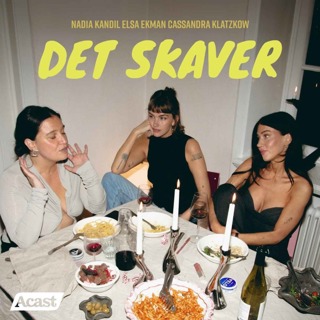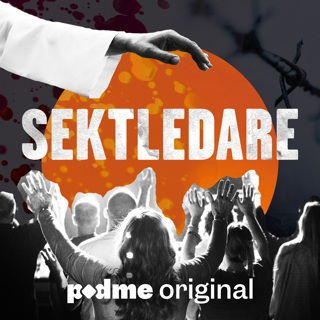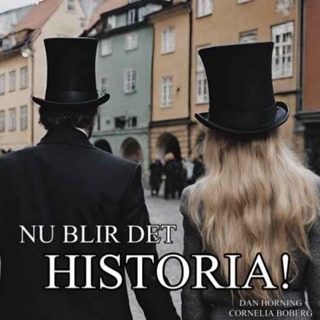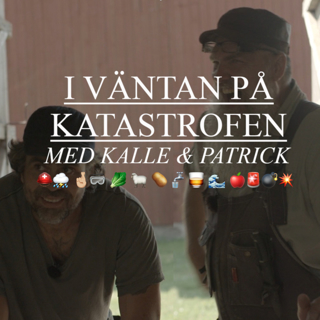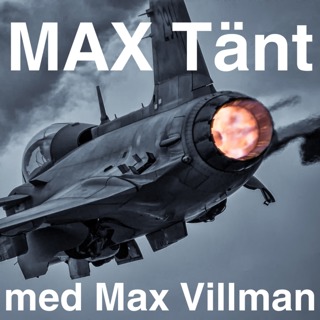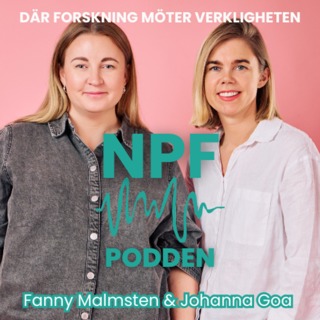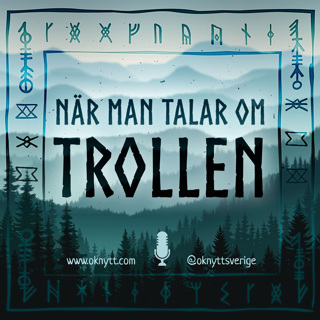
75. Wine History in Context: Alto Piemonte's Revival and Valle d'Aosta's Alpine Charm
Resources & Links: Sign up for the Wine Educate Newsletter: www.wineeducate.com/newsletter-signup Visit our website: www.wineeducate.com How to Contact Us: Email: joanne@wineeducate.com Instagram: @wineeducate Hello friends, and welcome back to the Wine Educate Podcast. I'm your host, Joanne Close, and today we're doing something a little different. This episode won't be heavy on exam prep, but it will give you important context about Piedmont and its history through two fascinating regions: Alto Piemonte and Valle d'Aosta. This topic is fresh on my mind because Jim and I were recently there this summer, and I'll also be teaching a class on it in the shop this Tuesday (there are still a few spots left if you're local). In this episode, you'll hear about: The drive from Nizza Monferrato to Gattinara, just 72 miles and about an hour and 20 minutes, through the rice fields that produce 90 percent of Italy's rice. My visit to Cantina Sociale di Gattinara, a historic co-op founded in 1908, and why this modest place holds such significance in the region's story. The history of Alto Piemonte, which once had 40,000 hectares under vine and produced Nebbiolo wines more prized than Barolo and Barbaresco, before phylloxera, wars, and migration nearly wiped it out. The current landscape of Alto Piemonte, with Gattinara at 111 hectares and other appellations as small as 8 hectares, and the renewed investment from Barolo producers seeking cooler, higher-altitude vineyards. Nebbiolo, known locally as Spanna, how it got that name, the blending grapes historically used, and why so many producers now focus on 100 percent Nebbiolo wines. Valle d'Aosta, Italy's smallest wine region at 469 hectares, a short but winding drive from Gattinara. The charm of the town of Aosta, its food shops, its folklore of dragons, the devil, and fairies, and how this mythology shows up in its architecture and even its wine labels. The unique position of Aosta as the last town before Mont Blanc, where both Italian and French appear on labels. The DOC structure and key grapes of the region, including Petit Rouge, Nebbiolo, and Prié Blanc, which reaches the highest vineyards in Europe at around 1200 meters. This episode blends history, travel, and wine study in a way that helps place Piedmont into a fuller context. If you are local, I would love for you to join me Tuesday at The Independent to taste through some of these wines. If you are not local, we offer wine classes year-round, so you can check our website for sessions that interest you. Next week we return to the classics of wine law with Chianti, then Rioja and the Langhe.
11 Sep 11min

74. Amarone & Recioto: The Passito Wines & Laws of Valpolicella Explained
Welcome back to the Wine Educate Podcast, where we explore WSET education, study tips, and practical advice for wine enthusiasts and professionals. I'm your host, Joanne Close, and this is episode 74. Today, we're heading to Northeast Italy, into the Veneto, to explore Valpolicella—a region whose wines feature prominently in both WSET Level 2 and Level 3. While you may not think "Valpolicella" sounds familiar, chances are you've heard of or even tried Amarone, one of its most famous styles. Valpolicella produces a wide range of wines, from light and easy-drinking reds to powerful, age-worthy wines made with partially dried grapes. In this episode, we'll unpack the different appellations, key grape varieties, and unique winemaking techniques that make this region so important to understand for your studies. What You'll Learn in This Episode: The geography of Valpolicella, located just outside Verona in the foothills of the Lessini Mountains. The main grapes: Corvina (the star of the show), along with Corvinone, Rondinella, and Molinara. The difference between wines made from fresh grapes versus those made with the appassimento method (partially drying grapes before fermentation). The dry styles: Valpolicella DOC and Valpolicella Classico DOC. The sweet and powerful wines: Recioto della Valpolicella DOCG and how it paved the way for Amarone della Valpolicella DOCG. The story of Amarone's "accidental" birth and its rise to international fame. The Ripasso method, where Valpolicella wine is "re-passed" over Amarone skins, creating the so-called "Baby Amarone." By the end of this episode, you'll have a much clearer grasp of the styles, rules, and labeling terms that often confuse students—and you'll be better prepared to recognize how these wines show up in WSET exam questions. Resources & Links Sign up for the Wine Educate Newsletter for weekly study tips, class updates, and practice essay questions. www.wineeducate.com/newsletter-signup Catch up on Episode 72 for an overview of Italian wine laws. Next time, we'll head back to Piedmont to explore a more off-the-beaten-path region, Valle d'Aosta. Stay tuned!
9 Sep 12min

73. Barolo & Barbaresco: Wine Laws at the WSET Level 3 Level
Barolo & Barbaresco: Wine Laws at the WSET Level 3 Level Welcome back to the Wine Educate Podcast, where we explore WSET education, study tips, and practical advice for wine enthusiasts and professionals. I'm your host, Joanne Close, and this is episode 73. Today, we're diving into two of Italy's most legendary regions: Barolo and Barbaresco, through the lens of WSET Level 3 wine laws. These two Nebbiolo-based DOCGs may sit just two miles apart, but their histories, elevations, soils, and styles each tell a fascinating story. Barolo spans about 2,000 hectares, while Barbaresco is much smaller at just 677 hectares. Both regions are defined by steep south-facing slopes, variations in altitude, and unique mesoclimates that make understanding their laws and vineyard classifications essential for Level 3 students. In this episode, we'll cover: The growth of Barolo's vineyard land (including the 50% increase between 1999–2013) and what it means for quality. Barolo's DOCG rules, from 100% Nebbiolo to its strict minimum aging requirements (38 months, with 18 in wood). The controversies between traditional and modern producers in the 1990s and how styles have evolved. Barbaresco's smaller size, earlier ripening Nebbiolo, and how the Tanaro River influences its style. Why Barbaresco requires only 26 months of aging, and the logic behind the January release date. The role of villages, named vineyards (crus), and labeling terms that help you identify the best wines. How Alba DOC and Langhe DOC wines offer tremendous value compared to their more famous neighbors. I'll also share some of my own travel experiences in the region—from tasting unforgettable wines to hearing firsthand about the challenges of soaring land and housing prices for local winemaking families. By the end of this episode, you'll have a clearer picture of how Barolo and Barbaresco's wine laws shape their styles, reputations, and market values. 📌 Next up: On Tuesday, we'll shift focus to Valpolicella and unpack Amarone, Ripasso, and Recioto—another region where wine laws really drive style.
4 Sep 16min

72. Italian Wine Laws at the WSET Level 2 Level
Resources & Links Sign up for the Wine Educate Newsletter: www.wineeducate.com/newsletter-signup How to Contact Us Email: joanne@wineeducate.com Website: www.wineeducate.com Instagram: @wineeducate Hello and welcome to the Wine Educate Podcast, where we explore WSET education, study tips, and practical advice for wine enthusiasts and professionals. I'm your host, Joanne Close, and this is Episode 72. Last week in the newsletter, I asked what wine laws you wanted me to cover next, and over 75% of you said Piedmont. But before we dive into that beautiful (and complex!) region, it's important to first look at Italy's wine laws as a whole. Understanding the bigger framework will make learning regions like Piedmont much easier. In this episode, I'll cover: Italy's geography and climate – stretching across varied latitudes, mountain ranges, and volcanic soils. The incredible grape diversity – over 350 authorized grape varieties and potentially hundreds more still being identified. The wine law system – from the EU's PDO/PGI framework to Italy's own DOC, DOCG, and IGT designations. History of Italian wine laws – why Italy was later than France to adopt these systems, and how they evolved from the 1960s through the 1990s. Key labeling terms – what Classico means (think historic heartland sites) and how Riserva indicates longer aging. This episode will give you a solid foundation so when we get into regions like Barolo, Barbaresco, Valpolicella, Alto Piemonte, and Valle d'Aosta, the details will click into place. If you're not yet on the Wine Educate newsletter, make sure to sign up at wineeducate.com – it's where I share extra study tips and give you a say in which regions we cover next. On Thursday, we'll start with Barolo and Barbaresco, two of the most iconic DOCGs in Italy. See you then!
2 Sep 10min

71. Wine Laws of Burgundy: Côte Chalonnaise & Mâconnais
Resources & Links Sign up for the Wine Educate Newsletter: www.wineeducate.com/newsletter-signup How to Contact Us Email: joanne@wineeducate.com Website: www.wineeducate.com Instagram: @wineeducate Episode 71 – Wine Laws of Burgundy: Côte Chalonnaise & Mâconnais In this episode of the Wine Educate Podcast, we conclude our Burgundy wine law series with two often-overlooked but fascinating regions: the Côte Chalonnaise and the Mâconnais. These southern Burgundy appellations may not always command the same prestige as the Côte d'Or, but they deliver remarkable value and unique expressions of Chardonnay and Pinot Noir. We'll cover: The geography and elevation of the Côte Chalonnaise and how it impacts ripening and wine style. Notable appellations including Rully, Mercurey, Givry, Montagny, and Bouzeron (yes, it's as fun to say as it sounds). How wines from these regions compare to their Côte d'Or neighbors—sometimes lighter, sometimes rustic, but often great value. The history and expansion of the Mâconnais, where Chardonnay dominates, Gamay sneaks in, and rolling hills create diversity in vineyard conditions. Key appellations such as Mâcon-Villages, Saint-Véran, and the star of the region: Pouilly-Fuissé, which gained Premier Cru status as recently as 2020. Why these regions represent "sneaky deals" for wine students and enthusiasts alike. As always, I connect these details back to the WSET Level 3 framework so you'll know exactly what to focus on for exam preparation. Next week, by popular request, we begin exploring the wine laws of Northern Italy, starting with Piedmont.
28 Aug 10min

70. The Wine Laws of Burgundy – Côte d'Or & The Importance of Slope
70. The Wine Laws of Burgundy – Côte d'Or & The Importance of Slope Resources & Links Sign up for the Wine Educate Newsletter: www.wineeducate.com/newsletter-signup How to Contact Us Email: joanne@wineeducate.com Website: www.wineeducate.com Instagram: @wineeducate Today's episode continues our Burgundy series with a focus on the Côte d'Or—and more specifically, the role that slope plays in vineyard quality and classification. This concept is key not just in Burgundy but also in other cool to moderate regions like Germany's Mosel and Alsace. We'll cover: Why elevation matters (200–400 meters in the Côte d'Or) How soil, drainage, and frost risk change from top to bottom of the slope Why mid-slope vineyards are home to many Premier Cru and Grand Cru sites How aspect (east/southeast exposure) influences ripening in this northerly climate The Côte de Nuits vs. the Côte de Beaune, and why nearly all red Grand Crus are in the north and nearly all white Grand Crus are in the south Key villages and their most famous crus, including Gevrey-Chambertin, Vosne-Romanée, Nuits-Saint-Georges, Aloxe-Corton, Meursault, Puligny-Montrachet, and Chassagne-Montrachet Newer classifications like Bourgogne Côte d'Or AOC and how they fit into the picture This is a dense one—but understanding slope and geography will make Burgundy's wine laws far less intimidating. Next up: we'll wrap up our Burgundy laws series with Chalonnais and the Mâconnais on Thursday.
26 Aug 13min

69. The History of Burgundy Wine Laws: How Monks and the Napoleonic Code Shaped Today's Vineyards
Resources & Links Sign up for the Wine Educate Newsletter: www.wineeducate.com/newsletter-signup How to Contact Us Email: joanne@wineeducate.com Website: www.wineeducate.com Instagram: @wineeducate Welcome to episode 69 of the Wine Educate Podcast. This week, we're continuing our Burgundy series, focusing on the fascinating history behind the region's wine laws. Understanding this history really helps explain why Burgundy looks the way it does today—with its extreme fragmentation and complex vineyard ownership. We start by looking at the early role of the monks. The monks not only planted and maintained the vineyards, but also took careful notes over centuries. Their records helped identify which parcels produced the best wines, laying the foundation for today's classification system of Grand Cru and Premier Cru sites. Then we move to the Napoleonic Code. After the French Revolution, vineyard land was redistributed from the church and nobility to the people. Under Napoleonic inheritance laws, land had to be divided equally among children. Over generations, vineyards were literally sliced into smaller and smaller parcels—sometimes down to just a single row of vines. This made it nearly impossible for individual growers to make and bottle wine on their own, paving the way for the rise of négociants. We also compare this with Bordeaux, where wealth and resources allowed estates to avoid such division by creating shares, keeping vineyards intact under large châteaux. This is a key reason why Burgundy and Bordeaux evolved so differently. Finally, we take a closer look at Chablis, adding another layer to our Burgundy pyramid: Petit Chablis – entry-level wines from less favorable sites (often cooler or higher). Chablis AOC – classic Chardonnay from the region. Chablis Premier Cru – 79 sites exist, though not all are widely used on labels. Chablis Grand Cru – one appellation, but divided into seven named climats, each appearing on labels. Next week, we'll dive into the Côte d'Or and one of the most important concepts in wine education: slope. We'll explore why the position of vines on a hillside matters so much, not just in Burgundy but in many of the world's great wine regions.
21 Aug 7min

68. WSET Level 2: Intro to Burgundy Wine Laws and Classifications
Resources & Links: Sign up for the Wine Educate Newsletter: www.wineeducate.com/newsletter-signup Visit our website: www.wineeducate.com How to Contact Us: Email: joanne@wineeducate.com Instagram: @wineeducate In this episode, Joanne introduces the fascinating world of Burgundy (or Bourgogne) and unpacks the wine laws at the WSET Level 2 level. This is the start of a four-part series on Burgundy, where history, geography, and classification come together to shape one of the most famous wine regions in the world. You'll learn about: How Burgundy compares to Bordeaux in size and production. The climate differences between Chablis, the Côte d'Or, and the Mâconnais. Why Burgundy's geography and soil diversity create such nuance in its wines. The pyramid of Burgundy's appellation system: Regional, Village, Premier Cru, and Grand Cru. Key appellations to know for WSET Level 2, including Chablis, Meursault, Puligny-Montrachet, Gevrey-Chambertin, Nuits-Saint-Georges, Beaune, Pommard, Mâcon, and Pouilly-Fuissé. The ongoing debate of "Burgundy" vs. "Bourgogne" — which one should we use? Burgundy may look deceptively simple—white wines are Chardonnay, red wines are Pinot Noir—but this episode shows why its classification system makes it one of the most complex and fascinating regions to study. Stay tuned for the next episode in this series, where we'll take a deeper dive into Burgundy's history and how it connects to today's wine laws.
19 Aug 11min



